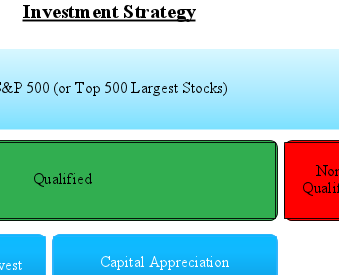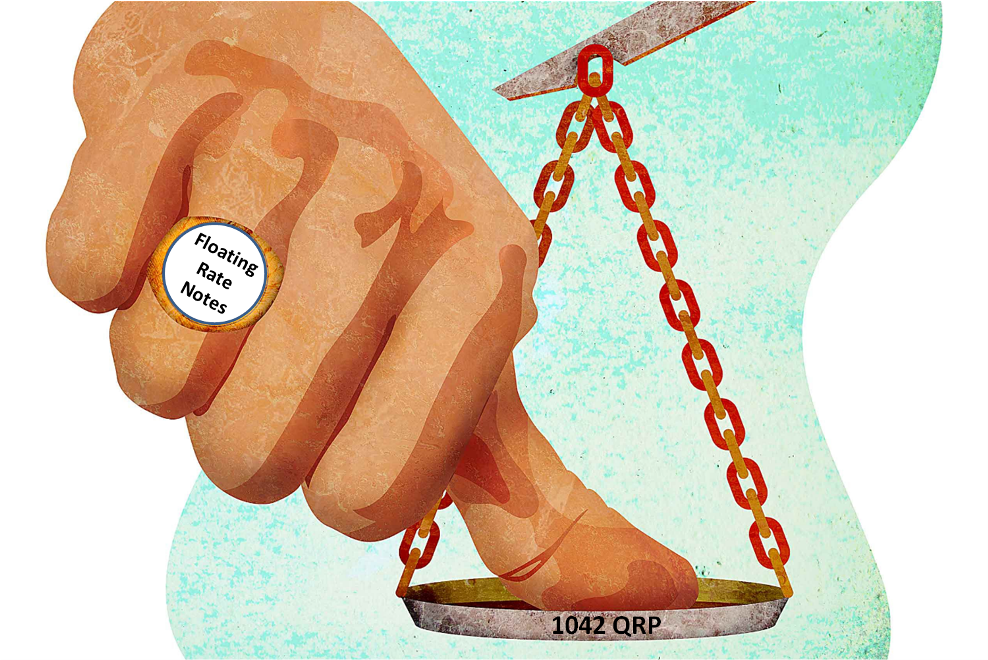Like most people confronting a perplexing challenge, business owners who are contemplating a Section 1042 sale of their equity to an ESOP frequently turn to the internet as an initial point of reference to research their tax-deferred rollover options. Many of you in that position probably have learned from your ESOP advisory team that you cannot simply reinvest your sale proceeds in just any old asset: In order to defer capital gains taxes on the sale of the business, you need to buy something called 1042 QRP—or Qualified Replacement Property. Upon first examination, this does not seem like such a big deal, but dig a little deeper and you sense looming complexity.
1042 ESOP Rollovers—Do Not Settle for the “Default”
You may have been disappointed to learn that the most widely employed rollover investment that satisfies 1042 QRP rules is something called a floating rate note, specially designed by investment bankers for 1042 ESOP rollovers. Among industry advisers, this has been the default QRP solution for almost 30 years. You would be forgiven for admitting that the hair on the back of your neck stood up at the mere thought that Wall Street had invented an investment product just for you!(1) It is consequently not surprising to learn that floating rate notes currently pay coupons yielding less than 1%(2) and have no prospect of appreciating in value during the 30-40 years that you might expect to hold them.
As if that weren’t enough, you may have learned that the same investment banker who would sell you these floating rate notes would be more than happy to take them back afterward as collateral for a loan he will extend to you at 90 cents on the dollar and which costs you a further 0.8-1.0% per year in net interest expense—all for the opportunity to gain access to most of your original business sale proceeds.
Why would you jump through these hoops?
Because you naturally wish to reinvest your sale proceeds in assets that can help to support your lifestyle and build wealth that will last for generations. What happened, you might ask, to the “win-win” promise of forming an ESOP? To the dream of doing well for yourself by doing good for your employees? The National Center for Employee Ownership (NCEO), perhaps the nation’s most widely respected source for unbiased information and research on ESOPs, recently published an article titled Red Flags in ESOP Transactions,(3) in which the authors call attention to the ‘Inappropriate Use of Floating Rate Notes’:
Floating rate notes (also called ESOP Notes) are long term, non-callable bonds often used as qualified replacement property for sellers selling to an ESOP. They allow the seller to meet the rules for tax deferrals under an ESOP. The issues with these notes are beyond the scope of this article, but they do not make sense for all sellers. Make sure you get advice from someone not selling the notes before proceeding.
Sound advice, we think. Which brings us back to my first point, namely why you are in front of your computer searching Google for information about floating rate notes. Do not despair for lack of information, as we’ve been there, too. We are Alpha Architect,(4) an independent financial advisor (i.e., fiduciary) to several ultra-high-net-worth family offices, and investment manager of five publicly traded ETFs. We first undertook our research into 1042 qualified replacement property investment strategies in 2013 when an ultra-HNW client approached us seeking to sell shares in a large ESOP-owned company. He asked us to assist him in building a rollover portfolio that would maximize the after-tax value of his ESOP 1042 sale proceeds.
Along the way, we learned that this is not a transparent market and that floating rate notes are comparatively unattractive from an investment standpoint—to say nothing of also being relatively tax-inefficient. We didn’t like this seemingly opaque and expensive option any more than our client did.
Despite intensive efforts to uncover more attractive rollover investment options for our client, we came up empty-handed (Why this is the case is the subject of a different article, below). As a consequence, we pioneered our own transparent and affordable passive equity 1042 ESOP rollovers, which you can read about below. By shining a bright light into this dim corner of the investment management market, we hope to empower business owners to identify for themselves “the issues with these notes” and to choose proactively the most appropriate 1042 qualified replacement property investment strategy for their needs.
We hope you will use this article as a portal to the type of information that we believe all purchasers of 1042 ESOP rollovers need to know well in advance of making their investments, because once you choose there is no second chance.
Our Research on the Subject of 1042 ESOP Rollovers
 |
1042 QUALIFIED REPLACEMENT PROPERTY: AN OVERVIEW OF ESOP ROLLOVER STRATEGIES This is our comprehensive overview of 1042 Qualified Replacement Property. Everything you always wanted to know about determining the most appropriate assets to defer taxes, grow your wealth and get the job done. We work from the ground up to evaluate and rank 1042 QRP strategies available in the marketplace. |
 |
NOT IMPOSSIBLE: A LOW-COST, TAX-EFFICIENT, ESOP 1042 ROLLOVER STRATEGY This is an overview of our own affordable passive equity 1042 QRP solution. We designed it to perform like a US blue chip equity index fund, and we price it like an ETF. Transparent. Low fees. Low taxes. |
 |
1042 QRP: WEIGHING THE HIGH COST OF FLOATING RATE NOTES This cost-benefit analysis of floating rate notes as a 1042 QRP asset class will open your eyes to their high costs, ongoing fees and sub-optimal investment attributes. |
Yes, We Are a Technology Firm, but Human Interaction is Still Available
Have questions? Reach out. We’ve spent quite a few years thinking about ways to help investors succeed and we are always open to having a discussion and helping readers out. In fact, our firm mission is to empower investors through education. So help us accomplish our mission.
If you are interested in learning more about our 1042 ESOP rollover solutions, contact us (ask for Doug) and we will collaborate to build a win-win solution.
References[+]
| ↑1 | I spent more than a decade of my life as a Managing Director at Bear Stearns, so I’m pretty familiar with how adept investment banks are at generating fees for themselves. |
|---|---|
| ↑2 | Our recent review of seven floating rate note prospectuses accessed online revealed payment coupons of 3-month LIBOR minus spreads ranging from -25 bps to minus -35 bps. The 3 month US dollar LIBOR rate, as of the date of this article, is 1.18456%, accessed at http://www.global-rates.com/interest-rates/libor/american-dollar/usd-libor-interest-rate-3-months.aspx |
| ↑3 | Article accessed on May 9, 2017, at http://www.nceo.org/articles/red-flags-esop-transactions. |
| ↑4 | Who are we? Here’s our brief introductory video |
About the Author: Doug Pugliese
—
Important Disclosures
For informational and educational purposes only and should not be construed as specific investment, accounting, legal, or tax advice. Certain information is deemed to be reliable, but its accuracy and completeness cannot be guaranteed. Third party information may become outdated or otherwise superseded without notice. Neither the Securities and Exchange Commission (SEC) nor any other federal or state agency has approved, determined the accuracy, or confirmed the adequacy of this article.
The views and opinions expressed herein are those of the author and do not necessarily reflect the views of Alpha Architect, its affiliates or its employees. Our full disclosures are available here. Definitions of common statistics used in our analysis are available here (towards the bottom).
Join thousands of other readers and subscribe to our blog.

